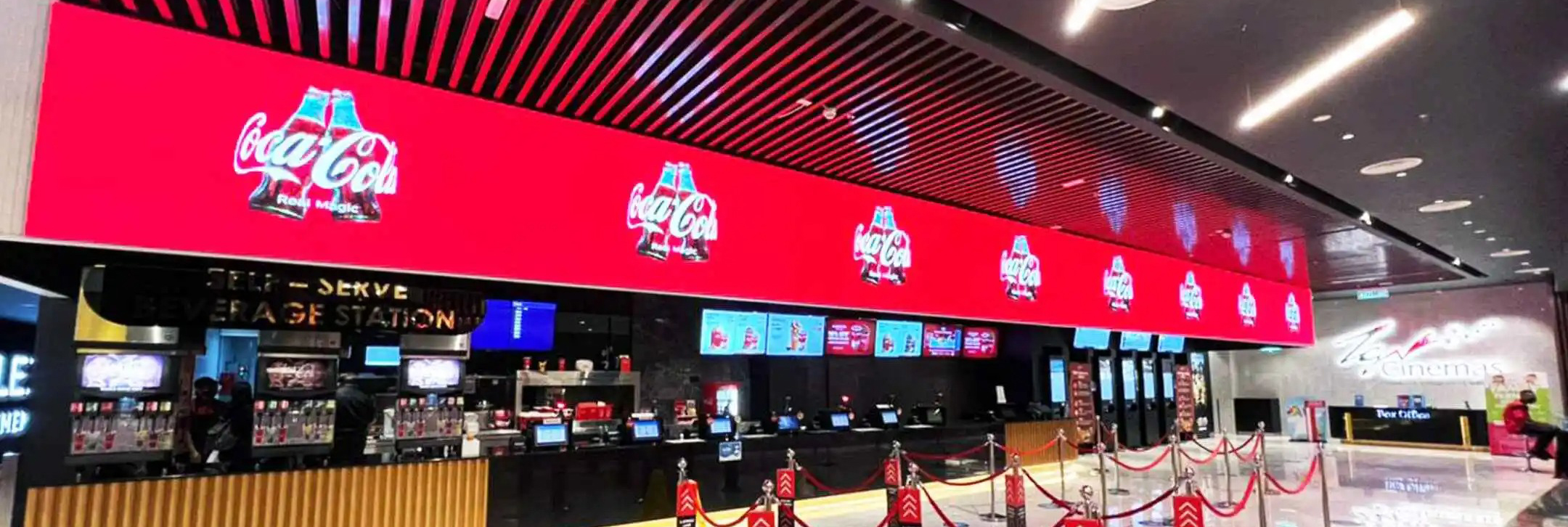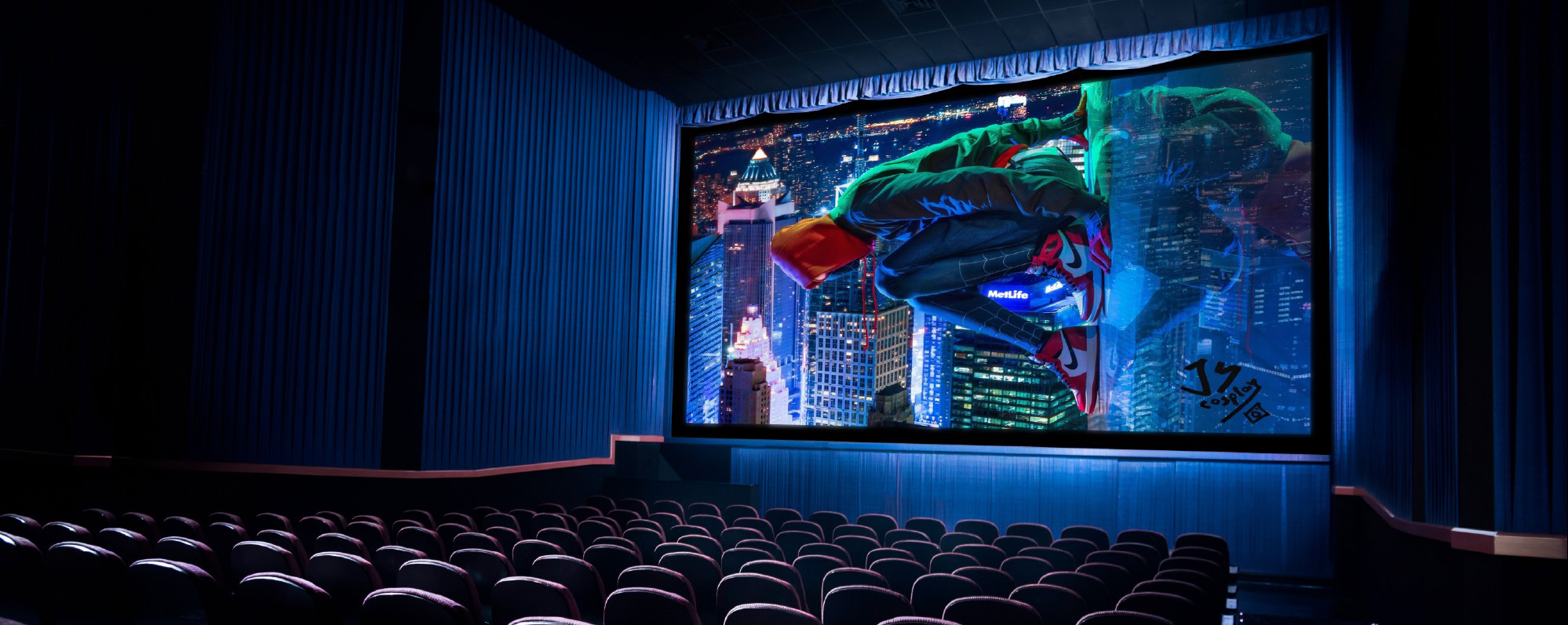1. Understanding Traditional Cinema Screens and Projectors
Traditional cinema screens rely on projection technology, where a digital or laser projector beams images onto a reflective white or metallic screen. These systems are cost-effective for large screens (like IMAX) but have limitations:
Lower brightness & contrast – Typically under 500 nits, requiring a dark environment.
Color accuracy issues – Limited color gamut compared to LED.
Maintenance costs – Projector bulbs last only 2,000-5,000 hours, needing frequent replacement.
While still common in many theaters, these drawbacks are driving the shift to LED cinema display technology.
2. What Is an LED Cinema Display?
An LED cinema display is a direct-view screen made of high-density LED panels that emit light directly—no projector needed. These screens offer:
Superior brightness (up to 10,000 nits) – Works well in bright environments, even outdoors (outdoor cinema LED screen).
Ultra-high contrast (1,000,000:1) – Perfect for HDR content.
Modular design – Can be customized into massive cinema LED wall setups.
Long lifespan (100,000+ hours) – No bulb replacements, reducing long-term costs.

3. Pros & Cons: LED Cinema Display vs. Projector
3.1 Advantages of LED Cinema Display
Stunning visuals – Higher brightness, deeper blacks, and wider color gamut (DCI-P3).
Better in bright environments – No need for total darkness, ideal for outdoor cinema LED screens.
Low maintenance – No bulbs to replace, minimal degradation over time.
Flexible installation – Can be curved or shaped into immersive cinema LED walls.
3.2 Disadvantages
Higher upfront cost – More expensive than traditional projectors.
Complex setup – Requires precise calibration and cooling systems.
3.3 Advantages of Traditional Projectors
Lower initial cost – Better for small theaters on a budget.
Proven for giant screens – Still preferred for IMAX and specialty formats.
3.4 Disadvantages
Dim image in bright rooms – Needs a dark environment.
Frequent maintenance – Bulb replacements and color calibration needed.
This technology is revolutionizing theaters, theme parks, and even outdoor events.
4. The Challenges Holding LED Back
Despite their advantages, LED cinema displays aren’t perfect. The biggest hurdle? Cost. Installing an LED screen is significantly more expensive than a traditional projector setup, making it a tough sell for smaller theaters. There’s also the issue of heat management—LEDs generate warmth, requiring advanced cooling systems in enclosed spaces.
And while LED excels in brightness, some purists argue that projectors still deliver a more “filmic” look, especially for classic movies shot on celluloid.

5. Where LED Cinema Is Winning Today
Some of the most impressive LED cinema screen installations are in China, where companies like RTLED and Leyard are pushing the boundaries. These screens aren’t just in theaters—they’re appearing in outdoor venues, theme parks, and even high-end home cinemas.
Internationally, brands like Christie and Samsung are also making strides, proving that LED isn’t just a niche product—it’s the next standard.
6. Will LED Cinema Display Replace Projectors Completely?
Not immediately, but the trend is clear:
LED is winning in premium theaters – Better image quality, no dark room needed.
Projectors still have a place – Cheaper for small theaters and specialty formats (like IMAX).
Future growth – As LED cinema screen costs drop, adoption will accelerate.
7. RTLED R Series for Cinema Screens
(Note: Specific details on RTLED R series were not found, but here’s a general overview of high-end LED cinema tech.)
If the RTLED R series is a premium cinema LED product, it likely features:
Ultra-fine pixel pitch (P0.9 or lower) – Sharp images even up close.
Cinema-grade color accuracy – Meets DCI-P3 standards.
Energy-efficient design – Reduces power consumption for cost savings.
8. Conclusion
The LED cinema display is transforming movie theaters with brighter, more vibrant visuals and lower maintenance. While traditional projectors won’t disappear overnight, the future belongs to cinema LED screens, especially for premium and outdoor venues.
Post time: Apr-08-2025


